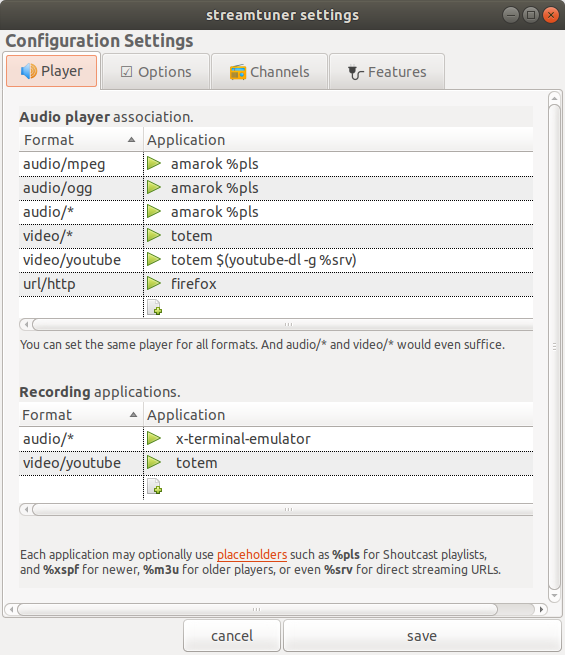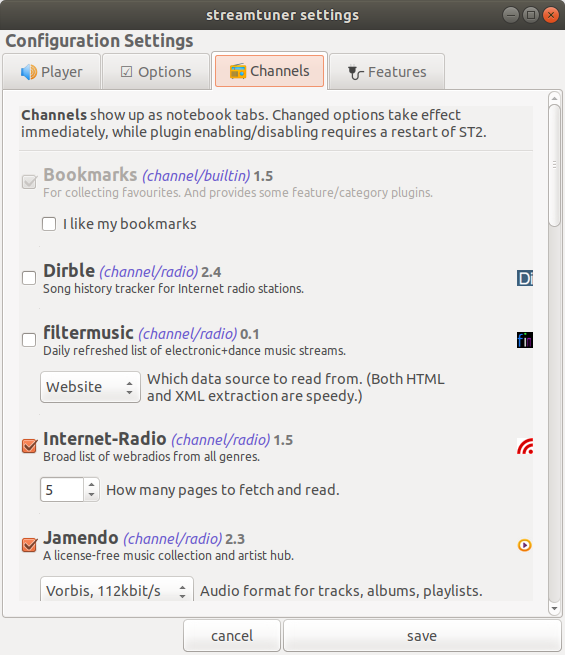Last Updated on September 3, 2020
Configuration
On the first run, a Configuration Settings dialog box appears. This lets you define the audio and video players to use, configure various display, station loading, and playlist conversion options.

By default some of the channels are not enabled, but they can be easily enabled from the Channels tab.

There’s also a Features tab which lets you configure various plugins. There’s the ability to add menu entries, internal functionality, or additional categories to appear in the Bookmark tab.
Next page: Page 3 – In Operation
Pages in this article:
Page 1 – Introduction / Installation
Page 2 – Configuration
Page 3 – In Operation
Page 4 – Other Features
Page 5 – Summary

Yeah, who haven’t used stream tuner. Pity the second iteration crashes a little too much for my taste. At least on Debian
Debian (11) user here, too — Streamtuner2 works flawlessly.
Thanks for the review, I’d never heard of StreamTuner2. Works pretty well on Fedora from a couple of hours usage.
What a Python re-write means is that it will fail to install in some significant percentage of attempts due to installed differences in python installations. As “new, kewl” paradigms in python rise, working installations will mysteriously fail.
What truly amazes me is that members of the python community were some of the MOST vocal about dependency hell
More or less a well accepted solution is to put Python, dependencies and the app into a userland and run it in a container. It gives freedom, flexibility, repeated environments – one of the reason why Docker and Kubernetes are so popular.